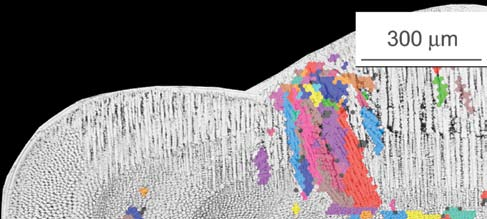The blades powering the turbines of jet engines and power plants are expensive, so companies try to make them last as long as possible. Eventually, though, the blades must be replaced due to damage from wear, erosion or fatigue.
John DuPont, professor of materials science and engineering, is exploring how to repair the blades so they can be reused instead of discarded. The blades are made of a nickel-based, single-crystal alloy. DuPont is attempting to use a laser to melt the surface of the blade tip, add new material while the tip is in a liquid state, and control the way the material solidifies so that it grows directly from the pattern of the existing alloy. The less change that occurs in the direction of the atoms, the stronger the blade will be and the hotter the temperature at which the engine can be operated, increasing its efficiency.
“There are a number of things we have to control to get the new material to grow in a single crystal,” says DuPont. “We have to control the distribution of temperature of the liquid very carefully, and that depends on how much power we pump into the blade from the laser and how fast we move the laser. It also depends on the shape of the molten pool.
“We’ve developed a mathematical model for predicting exactly which direction the solid is going to grow, based on knowledge of the melt pool shape. Once we know that, we can predict how fast it’s going to grow, which controls whether or not a stray grain forms. Our modeling information has enabled us to grow a single crystal, using the laser process, into 12 layers on the tip that are all single crystals. We changed the composition a little at the same time, for improved properties, which was an exciting development.”

